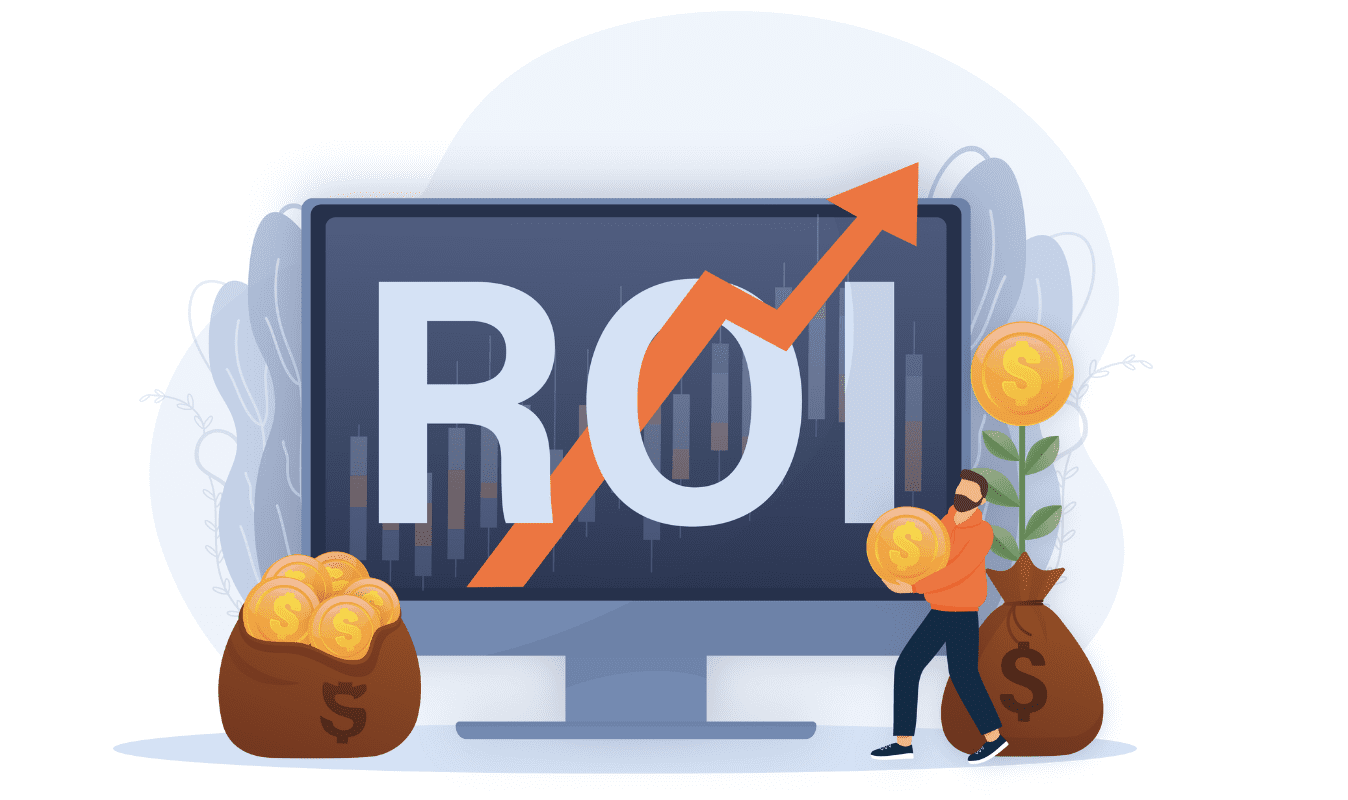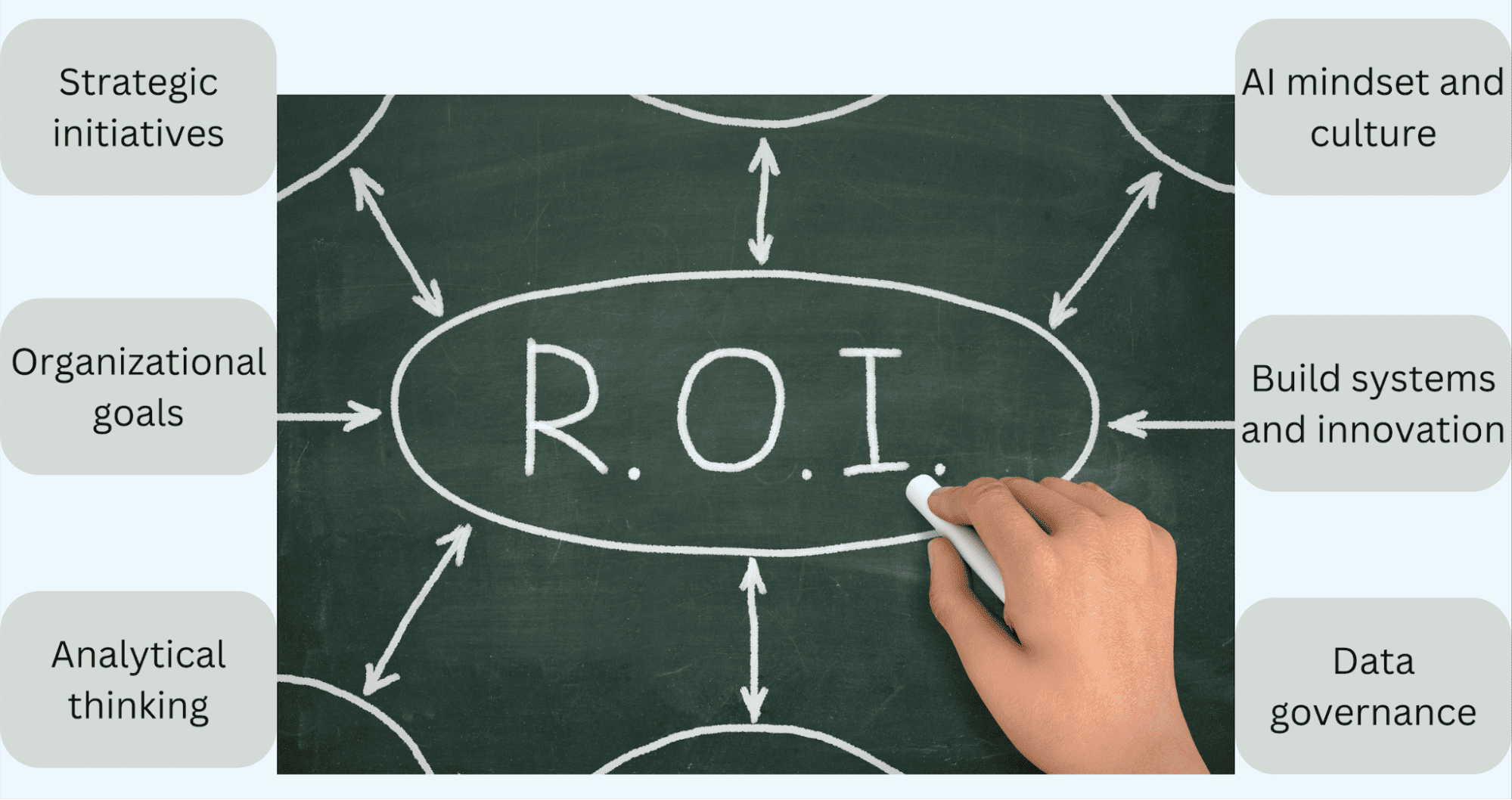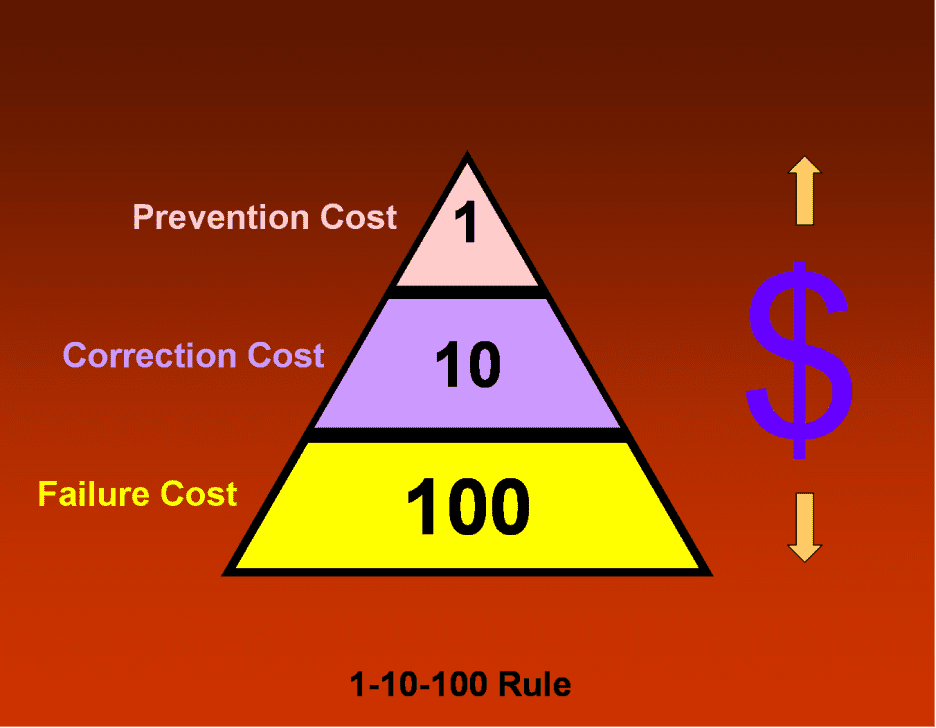Return on Investment (ROI) assists businesses in determining which projects must be prioritized, or put simply – the initiatives that deserve the most resources and attention to achieve business goals.

Image from Canva
Since we are talking about ROI, which involves numbers, so let’s start with some statistics:
- As per Forbes, the global AI market is expected to grow at a CAGR of 38% and will reach a whopping ~$1812 billion by 2030.
- AI is a top priority for 83% of the companies.
- As per IBM, spending on AI systems will increase by 27% to USD 154 billion in 2023.
- It further shares that the organizations, on average, can yield only 5.9% ROI on the invested cost of capital at 10%.
- However, successful visionaries have generated 13% ROI by gauging the right opportunities at the right time.
Given the enormous spending, there is an inevitable tendency to talk about – what is there in return for such hefty investments. That’s not it, PwC says that most companies are not even able to get any return at all.
AI investments soon become a point of concern for most executives. They need to make prudent AI investments that can garner high ROI, but how can they enable returns of the order of what leaders can generate? Note that the north star of the expected return is up to 30% in upcoming years.
- The first step is to think of AI as a strategic initiative. It must be derived from a specific organization’s goals, not that of a competitor’s goals. It is important to remember that each organization is uniquely positioned, given its niche, business model, and technical capabilities.
- It requires identifying projects aligning with business strategy, i.e., the goal and vision of the organization for the next 3-5 years.
- Even with a clear road ahead, realizing AI’s potential isn’t without its bumps. It mandates analytical thinking and inculcating AI culture throughout the organization.

Image by Author
- AI mindset helps the business discern which AI projects to kick-start while being frugal about non-AI-worthy projects. To put the cultural aspect into perspective, it is suggested to build a pool of opportunistic and innovative projects quickly and the ability to figure out the myriad variables on the go.
- Next is data – it is the lynchpin of the entire AI transformation, and hence, the majority of the attention and efforts must go into building processes on data governance. SAP defines data governance as “the policies and procedures implemented to ensure an organization’s data is accurate to begin with – and then handled properly while being input, stored, manipulated, accessed, and deleted.”
To understand ROI contextualized for AI initiatives, ‘value’ becomes more important than pure-play profits.
Profits imply the actual cash that relates to calculating the returns conventionally. However, AI practitioners prioritize “value-generation” to signify the organization-wide benefits of AI implementation.
With this additional context, let us break down ROI into two components. Return is the value generated from the investment that involves the costs of developing such systems.
Revenue and returns
There are various ways to assess the revenue. Besides direct revenue streams from AI-powered products, some initiatives are not directly a source of revenue but can subtly enhance or complement an existing process.
Such initiatives may not yield immediate results but can lead to a significant uptick in revenue over time. Consider AI-driven recommendation engines at e-commerce platforms that suggest products based on users’ browsing histories. These recommendations gently nudge the users towards additional purchases, leading to increased sales.

Image from Canva
Another example is when platforms enhance search relevancy and improve customer experience by quickly providing their choices of interest, keeping them loyal to the platform, and retaining them.
Cost – as we all know it
Revenue is just one part of the ROI calculation; the other involves judicious cost management. The significant costs of AI projects are the infrastructure, building AI teams, and data management solutions.
Hiring for AI skills involves onboarding, upskilling, and compensation costs. Some organizations outsource either the complete project or a part of the project that requires a specific skill set, saving themselves from the upfront costs.
However, external hiring also comes at an indirect cost where the in-house is not well-equipped to continue supporting the project, thereby introducing a dependency on external contractors for project maintenance and additional costs.
AI can be deployed for cases as simple as automating some of the repeat tasks that go on to reduce human errors, saving operational overhead.
Cost of failure
Let us talk about the cost not often accounted for – the cost associated with perpetuating the wrong decisions.
The 1-10-100 rule explains “how failure to take notice of one cost escalates the loss in dollars. Prevention cost should probably take priority because it is much less costly to prevent a defect than to correct one”.

Image from Total Quality Management
Like this rule, the cost of wrong decision choices is essential. It requires building a design thinking lens right from the beginning, including project scoping and identifying the right AI opportunities and associated risks.
Hence, building an organization-wide risk assessment framework is vital to address concerns such as bias, lack of oversight, transparency and accountability, data privacy, and more.
An initial ROI estimate during the ideation phase helps prioritize projects.
Having built a deeper understanding of the business problems, it is time to discuss technology. It is advised to start building the PoC rather than waiting for an ideal environment – where all input components, such as the data, algorithms, infrastructure, etc., are sorted out.
Once you start developing the PoC, the reality of whether it is feasible to scale the project starts to sink in.
PoC helps you verify the idea within a limited budget and a shorter time span.
The testing ground or sandbox ensures the value proposition before investing in building systems at scale. But the aspect of scale must be forethought at the PoC stage itself, whether it is in terms of:
- Building data pipelines to support data at scale,
- Algorithms that require expensive computational resources or
- The number of users the application will be serving.
An estimate of these dimensions shows how the AI solution will integrate into the organization’s technology stack.
If the PoC justifies the investment, the project moves to development.
It is worth noting that assessing revenue and cost factors is specific to the business model; hence, this post intends to help build a lens to gauge different factors and their impact on ROI.
Vidhi Chugh is an AI strategist and a digital transformation leader working at the intersection of product, sciences, and engineering to build scalable machine learning systems. She is an award-winning innovation leader, an author, and an international speaker. She is on a mission to democratize machine learning and break the jargon for everyone to be a part of this transformation.

